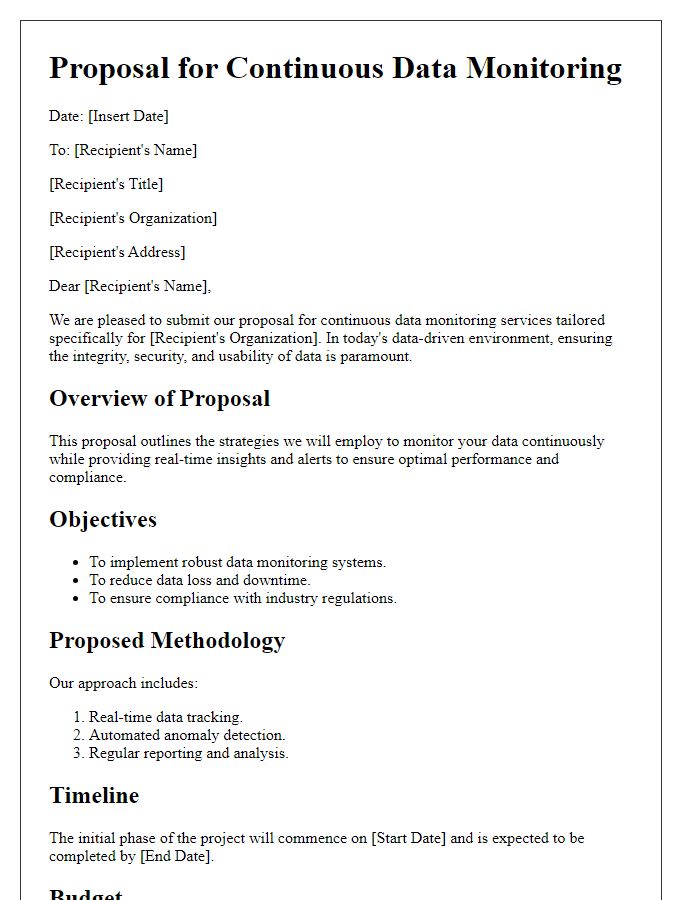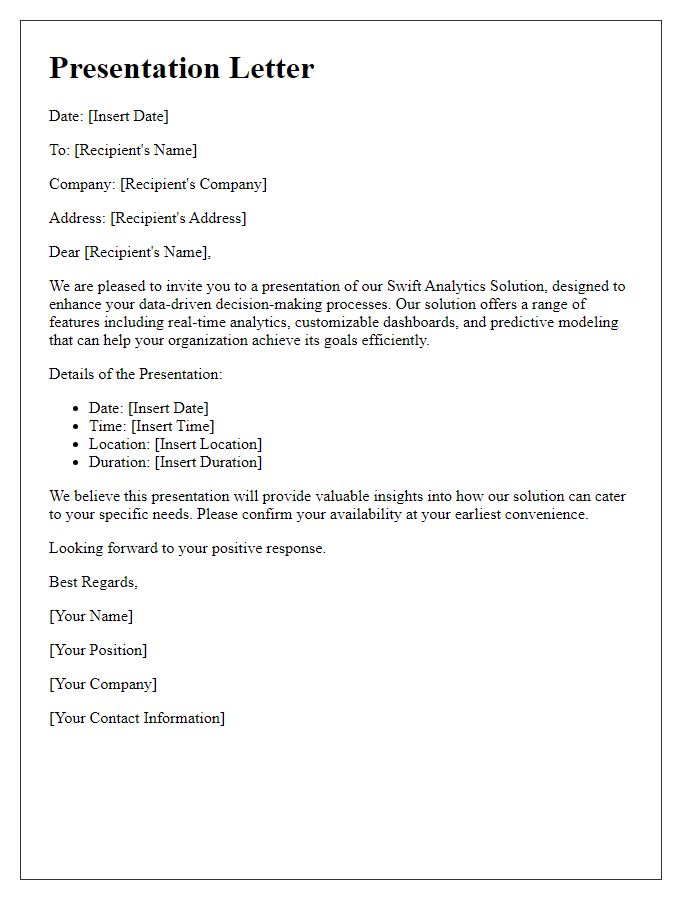Are you curious about how real-time analytics can revolutionize your business operations? In today's fast-paced world, having access to instantaneous data can enhance decision-making and improve efficiency like never before. Imagine being able to track your performance in real-time and adapt swiftly to market changes'sounds appealing, right? Join us as we delve deeper into this exciting topic and explore how a tailored real-time analytics solution can benefit your organization.

Project Objectives
Real-time analytics systems, integral for data-driven decision making, enable businesses to process and analyze vast datasets instantly. The primary objectives of implementing these systems include enhancing operational efficiency through immediate insights, improving customer engagement via personalized experiences based on live data, and enabling proactive risk management by identifying potential issues in real-time. Additionally, achieving data-driven culture within organizations will empower teams to make informed decisions quickly. Leveraging advanced technologies such as Apache Kafka for stream processing and Tableau for visualization can significantly improve the overall performance of these objectives. Implementing real-time analytics could lead to a competitive advantage, allowing businesses to respond swiftly to market changes and customer needs.
Technology Stack
The proposed technology stack for real-time analytics integrates several advanced components designed to optimize data processing and analysis. Utilizing Apache Kafka, a distributed event streaming platform, allows for real-time data ingestion from multiple sources, ensuring low latency and high throughput. The analytics back-end leverages Apache Flink, enabling complex event processing and real-time computation on large datasets. For data storage, we recommend using Amazon Redshift, a cloud-based data warehouse that supports fast querying of analytical workloads. The front-end can utilize Tableau or Power BI for visualizing analytics dashboards, providing stakeholders with immediate insights. Additionally, incorporating machine learning frameworks like TensorFlow can enhance predictive analytics capabilities, driving data-driven decision-making. This stack collectively empowers organizations to harness the full potential of their data in real-time, transforming raw data into actionable insights within seconds.
Data Source Integration
Real-time analytics implementation requires robust data source integration, utilizing APIs (Application Programming Interfaces) to connect various databases, such as SQL and NoSQL systems. Efficient data pipelines, often powered by tools like Apache Kafka or AWS Kinesis, facilitate the flow of information, ensuring minimal latency (under one second) in data processing. This integration enables businesses to harness data from social media platforms, CRM systems (like Salesforce), and IoT devices, allowing for enhanced decision-making capabilities. Key performance indicators (KPIs) can be monitored through dashboards, enabling teams to visualize trends and patterns instantly. Ensuring data cleanliness and consistency is crucial to achieving accurate insights, with data integration tools such as Talend or Informatica being instrumental in this process.
Security and Compliance
Real-time analytics in security and compliance plays a vital role in safeguarding sensitive data and ensuring regulatory adherence. Organizations, especially in finance and healthcare sectors, utilize real-time analytics systems to monitor data access and identify potential breaches immediately. Tools like Security Information and Event Management (SIEM) facilitate the analysis of vast data streams, highlighting anomalies that may indicate insider threats or external attacks. Regulatory bodies such as the General Data Protection Regulation (GDPR) mandate strict compliance measures; real-time analytics helps organizations demonstrate adherence through continuous monitoring and reporting mechanisms. Additionally, integrating machine learning algorithms enables predictive analysis, identifying vulnerabilities before they can be exploited, enhancing overall campus security in organizations. Investing in such systems not only mitigates risk but also fosters trust with clients, ensuring data integrity and regulatory compliance.
ROI and Benefits
Real-time analytics, a critical asset for businesses like retail chains and financial institutions, empowers decision-makers with instantaneous insights derived from big data processing. This technology can enhance operational efficiency by reducing the time needed to analyze trends and consumer behavior patterns, which is essential for maintaining competitiveness in fast-paced markets. For instance, implementing real-time analytics can lead to significant increases in return on investment (ROI), with studies showing potential revenue growth of 10-30% within the first year of adoption. Furthermore, businesses report improved customer satisfaction through personalized experiences, driven by data that captures user preferences in real time. The ability to swiftly adapt marketing strategies or inventory management based on current analytics fosters agile business practices, leading to a sustainable competitive advantage in various sectors.
















Comments